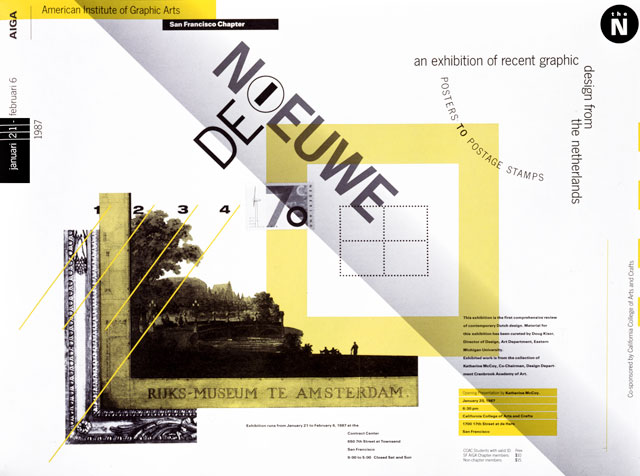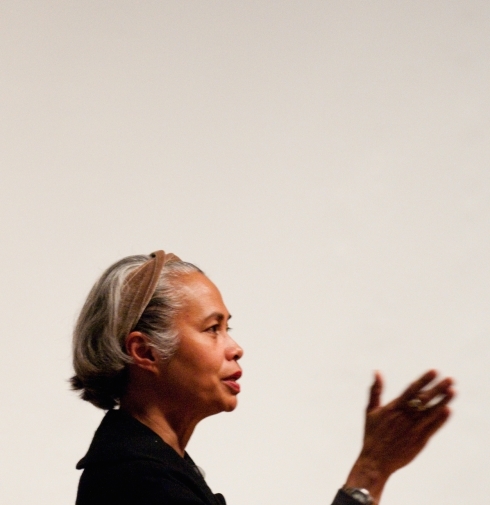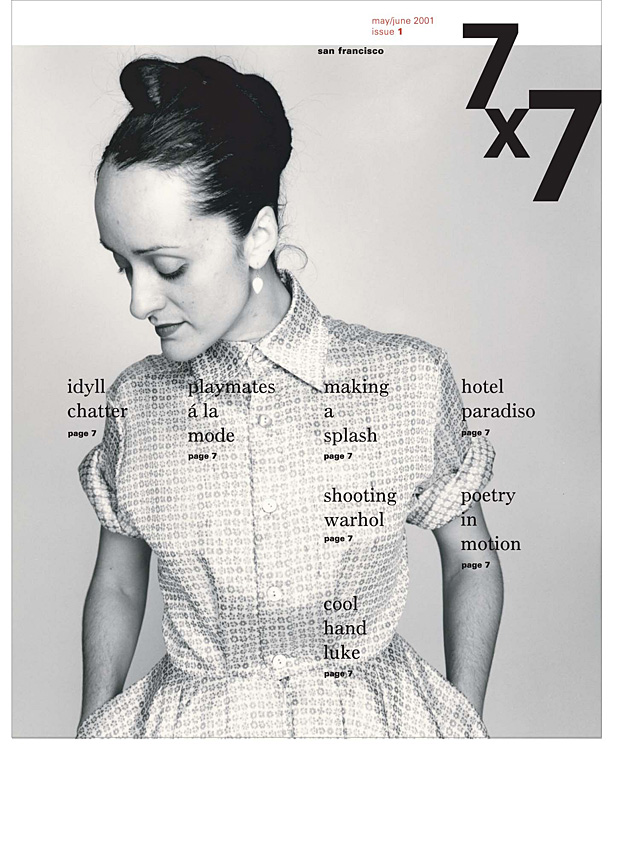Self-described “cultural nomad”, Lucille Tenazas approaches her graphic design practice as a portable skill that she adapts along the way to accommodate local aesthetics while still staying true to her own. Raised in a post-colonial Philippine culture where the Tagalog language was reserved for communication between family and friends and English was used for education and professionalism, Tenazas formed a unique relationship to language that seemed out of date upon arriving in California in 1979 to further her studies.[1] This desire to conquer and appropriate the English language is what originally made typography and graphic design so appealing, and what has acted as a basis for her work, where type and form work together in harmony.
Tenazas’ style, which she developed in the early 1980’s after her move to San Francisco, is reflective of two movements happening at the time, which also had profound effects on each other. First, the introduction of digital design which allowed designers to experiment with type and images in ways that would have been too difficult with analog production, and second, a reevaluation of the importance of simplicity in modernist graphic design. [1] Tenazas was among a group of young designers who were looking to move away from the prevailing ideas of modernism, an environment which allowed her to create a body of work that was both a result of her surroundings, and an interpretation of her past.
After winning many awards and working as an art director for her high-school and college newspapers in the Philippines, it was Tenazas’ aunt who first acted as a catalyst for her design career. Unknown to her, Tenazas’ father had financed his siblings college degrees years before he passed, and wanting to return the favor, her aunt offered to bring Tenazas to the United States to pursue postgraduate work.[2] After applying to Cranbrook Academy of Arts in Michigan and being rejected, Tenazas decided to attend the California College of Arts in San Francisco, where she stayed for only one semester. [2] During her time there she studied under the guidance of Michael Vanderbyl who was a forerunner in California’s new wave movement of the time – focusing on playful colors and free-flowing forms. She spent a lot of time in the library reading about Modernism, the DeStijl movement, and Russian Constructivism looking for inspiration but discovered that the more she tried to learn about her own work, the more she strived to do something different. [3]
While visiting her aunt in Michigan over Christmas of that year, she used the opportunity to show her new and improved portfolio to the directors at Cranbrook and was accepted on the spot. [2] Upon arriving there that spring she began to realize the difference of east coast influenced style compared to what she had learnt that fall – modern and contemporary design reigned and was accompanied by a more straight-edge aesthetic. She soon began to adopt some of the design principles being practiced there, leading her to develop an style that was undeniably her own, but could be adapted for the two dueling aesthetics.
Arriving in the US design scene as a blank slate allowed Tenazas to absorb both the west and east coast disciplines and interpret them as she wished – the essence of her work itself. “At the base level” she says, “we respond to other people’s problems. The nomad is able to move from one context to another, one discipline to another, one culture to another, and be seen not necessarily as a native, but as one of them—so that trust is engendered, and that allows the designer to speak in her client’s voice without sacrificing her own.” [2]
“The Body: Photographs of the Human Form”, book cover, 1994

“De Nieuwe: Posters to Postage Stamps”, poster, 1987
“7×7 San Francisco”, preliminary cover design, 2000
– Lydia O’Callaghan
[1] Wild, Lorraine. “Lucille Tenazas.” AIGA http://www.aiga.org/medalist-lucille-tenazas/
[2] Ashlock, Jesse. “Lucille Lozada Tenazas.” AIGA http://www.aiga.org/design-journeys-lucille-tenazas/
[3] “Video: AIGA Medalist Lucille Tenazas.” AIGA http://www.aiga.org/video-medalist-lucille-tenazas/
[4] “Lucille Tenazas on Design and Education.” Design Indaba. http://www.designindaba.com/news/lucille-tenazas-design-and-education


